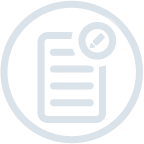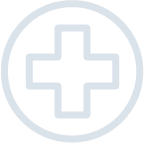Provides a set of minimum standards and practices for the safe and healthy operation of a laboratory.
Menu
General Lab Health & Safety information
What is the hierarchy of controls?
What are lab ergonomics?
What is occupational health for researchers?
What additional information should I know about vaccine options, health status and other healthcare?
Lab Documentation
What permits & registration are required?
What are the lab training requirements?
What are the lab procedure requirements?
What are the lab inspections requirements?
What are the other laboratory documentation requirements?
Personal Protective Equipment (PPE)
What are the minimum requirements for PPE?
What is job specific PPE?
What is respiratory protection?
What is the best practice for use, care & disposal of PPE?
General Lab Health & Safety information
What is the hierarchy of controls?
The first step to safety in the workplace is to identify the hazards that are present. Then, you must do a risk assessment which takes into account the probability of the hazard resulting in an adverse effect (ex. almost certain, practically impossible), the exposure that the worker would be have to the hazard (ex. 5 minutes, 8 hours), and the consequence if the hazard did harm the worker (ex. Fatality, first aid treatment). If it is determined that there is a risk present, controls are implemented to minimize the risk to the worker.
When Implementing Controls, follow the order in The Hierarchy of Controls:
- Elimination
- Can you remove the hazard completely?
- Substitution
- Can you use something else that less hazardous?
- Engineering Controls
- Can you use something that has safety built into the design of it?
- Examples include: Fume Hood, Biosafety Cabinet
- Administrative Controls
- Can you provide the worker with information that can help control the hazard to a level that is as low as reasonably achievable?
- Does not remove the hazard
- Examples include: Training the worker, safe work procedures, policies, signage, work/rest schedule, limiting hours of work
- Personal Protective Equipment
- Last line of defense because it does nothing to remove the hazard – it just acts as a barrier between the worker and the hazard
- Must be used properly in combination with one of the other controls on the hierarchy and never the sole means of controlling a hazard
- Examples include: Gloves, Safety Goggles, Lab coat
What are lab ergonomics?
Musculoskeletal Injuries affect muscles, tendons and ligaments, nerves, blood vessels or related soft tissue. These injuries have a multitude of origins such as overexertion from lifting a heavy box or from repeatedly using the same muscles over and over again.
Human Resources has created a section on Lab Ergonomics which provides easy to follow descriptions on how to maintain an ergonomic posture while working in a lab setting as well as a guide on common equipment used in the lab and ergonomic alternatives.
What is occupational health for researchers?
Occupational Health refers to the worker’s safety in the context of occupational hygiene, respiratory safety, ergonomics and human factors. For more information about occupational health for researchers, see the SRS Occupational Hygiene section.
What additional information should I know about vaccine options, health status and other healthcare?
Occupational and Preventative Health (O&PH) is an in-house program that offers medical services such as vaccinations and health screenings to protect the health and well-being of UBC employees.
The services are offered free of charge to the individual and are confidential. For some workers, enrollment in O&PH is required by provincial and/or federal regulations. To find out more, visit the Occupational and Preventative Health Website.
Lab Documentation
Documentation is used by federal, provincial and UBC Health & Safety inspectors to gauge the level of commitment to working safely in your laboratory. Where documentation is available, it provides evidence of due diligence and regulatory compliance; where it is missing, it indicates safety program shortcomings.
What permits & registration are required?
Many types of research require permits and/or instrument registration, certification, or validation.
- If you wish to use biological materials, you must apply for a Biosafety Permit.
- If you wish to use radioactive materials or devices containing radioactive sources, you must apply for a Radiation Permit.
- If you wish to work with Animals, you must apply for an Animal Care Certificate
- If you wish to work with humans or human samples, you must apply for Ethics Approval. The following instruments must be registered with the Research Safety Office:
- X-ray generating equipment
- Class 3B and 4 LASERS
- Scintillation Counters
- Nuclear Gauges and Devices
- Autoclaves used for decontamination of biological waste
- Biological Safety Cabinets
- Irradiators
- Devices or Instruments containing high powered magnets (eg. NMR)
What are the lab training requirements?
Documentation of training is required by federal and provincial regulations and by UBC policy. There are 2 levels of training: institutional and worksite specific.
Institutional training includes:
- UBC safety courses provided by Safety & Risk Services
- Animal Care Services and
- Office of Research Services.
Lab specific training is completed within the lab and must be recorded as part of the general laboratory orientation. An individualized training needs assessment and a record of each technique or task learned must be documented.
What are the lab procedure requirements?
Written procedures must be available to staff and students for all tasks or task types done as part of their work at UBC. Procedures may be commonly referred to as protocols, standard operating procedures (SOPs) or safe work procedures (SWP). Regardless of what term is used, the procedure must include safety measures required for the task outlined including PPE, engineering controls, and administrative controls.
What are the lab inspections requirements?
The purpose of inspections is to ensure the safety program in place is adequate for the work being done. Any gaps identified during an inspection must be corrected within a reasonable time frame. Inspections happen at 4 levels:
| Inspection Type | Frequency | Documentation | Required Actions |
| Self Inspection | Monthly | Checklist with any necessary corrective actions noted | Store documentation for 3 years |
| Joint Occupational Health & Safety Committee (JOHSC) | Annual | Report to be provided by JOHSC and received by the principal investigator | Complete necessary actions and notify committee within allotted time frame |
| UBC Safety & Risk Services | Every 1 to 5 years, depending on the risk rating of the work done | Report with corrective action log to be provided by SRS and received by the principal investigator | Confirm receipt of report. Complete and return corrective action log within allotted time frame |
| Regulatory Inspection by WorkSafeBC, PHAC, CFIA or the CNSC | Occasionally | Legally binding report or letter to be provided by inspecting agency and received by the principal investigator, identifying compliance gaps | Gaps must be addressed according to the terms stipulated in the report or letter |
Having an accurate inventory is a proactive measure to determine the safety features and procedures that need to be in place for the lab to function safely. Laboratory personnel must update their:
- chemical inventories on an annual basis at a minimum
- biological inventories must be updated as these materials enter and leave the laboratory
- radioisotope inventories must be updated as these materials enter and leave the laboratory
What are the other laboratory documentation requirements?
 Laboratory Hazard Door Signage provides emergency responders with a comprehensive view of the hazard classes contained within a laboratory space to determine an appropriate and effective response to emergency situations. These signs are placed at the entrance of workspaces where hazards exist. To see what each sign symbolizes, see the Laboratory Hazard Signage Document (PDF).
Laboratory Hazard Door Signage provides emergency responders with a comprehensive view of the hazard classes contained within a laboratory space to determine an appropriate and effective response to emergency situations. These signs are placed at the entrance of workspaces where hazards exist. To see what each sign symbolizes, see the Laboratory Hazard Signage Document (PDF).
Whenever hazardous materials of a specific class are added to or removed from the laboratory’s inventory, this information must also be passed on to Safety & Risk Services to update the sign. To request, update, or replace an existing poster fill out the Laboratory Hazard Signage Application Form (WORD) and email to the SRS Research Safety Office.
Questions about the signage program should be directed to the SRS Research Safety Office.
Personal Protective Equipment (PPE)
What are the minimum requirements for PPE?
Personal Protective Equipment is the last line of defense as it acts solely as a barrier between yourself and the hazard. Once that barrier is broken, you are exposed to the hazard. The hierarchy of controls must be considered before resorting to PPE. However, when there is a need for PPE, it must be worn regardless of the other control measures that are in place.
The minimum PPE requirements that an individual must wear in order to enter a UBC wet laboratory are:
- Long loose fitting pants (long socks, leggings, nylons, and skinny jeans are not appropriate)
- Full Covering Liquid Resistant shoes (sandals, ballet flats, cloth, and mesh shoes are not appropriate)
- Lab coat that it buttoned and sleeves rolled down
What is job specific PPE?
Depending on the hazard, a wide variety of additional PPE must be worn. This will range from the type of glove, eye protection, coveralls, aprons, head covers, specialized shoes, or numerous other forms of PPE. A summary of items is below but more information can be found in the UBC Biosafety User Reference Manual 2020 (PDF), Chemical Safety Manual (PDF), and Radiation Safety Manual.
Hands
The proper protection of your hands is critical. When handling hazardous materials, the appropriate gloves must be worn. Please consider whether the hazardous material will react with the material of the glove, the rate it will permeate the glove material, and the dexterity required.
- Nitrile/latex – protection from many chemicals and all biological materials. Often appropriate when working with radiation as well.
- Rubber gloves – many chemicals react with latex or nitrile, rubber gloves offer an alternative.
- Insulated gloves/mitts – protection from very hot or very cold objects. So objects being removed from the freezer or autoclave.
- Kevlar or leather – protection from sharps objects, rough surfaces, or bites.
Head
There are various forms of head protection, some are to protect your head, while others are to protect your samples from you. Some examples of head protection include but are not limited to:
- Hard hat – protection from falling objects;
- Hair bouffant or hair net – protection of animals or samples from hair and dander. Most often used in Animal Unit/Clean rooms/Containment Level 3. In the case of CL3, it is to protect you from any aerosolized pathogens sticking to hair causing an exposure risk;
- Regular hat – protection of field researchers from sun or rain exposure;
- Long hair needs to be tied back in all wet laboratories.
Eyes
There are three main categories of eye protection. At no time are everyday prescription eye glasses considered to be eye protection.
- Safety glasses – Projectiles (flying objects) – protection from flying particles from the front or side.
- Splash goggles that form a seal around the eyes – protection from liquids splashing into the eye.
- Face shield – used to protect not only the eyes but entire face from splashes and projectiles.
Ears
It is important to consider the type of sound that may be affecting your hearing. As a general rule of thumb, if you have to raise your voice to be hear when you are arm’s length away from the person you are talking to, the noise is at a hazardous level.
- Earmuffs – usually used for low frequency noise
- Ear plugs – may be used for low or high frequency noise. Be sure to check the product to determine the frequency levels that the earplugs are approved for.
Apparel
It is important to consider the materials that your clothing is made of. Synthetic materials have a root product of oil. Many chemicals will react with the synthetic cloth which amplifies the exposure. For instance synthetic cloth will melt onto your skin when lit on fire causing more severe burns than natural fibers like wool and cotton. Some examples of safety apparel:
- Coveralls – protection of the entire body. This may take the form of a chemical resistant Tyvek suit or cotton workshop suit;
- Aprons – protection of the body, most often for small liquid splash risks. Lead lined aprons may be required when working with gamma radiation or x-rays;
- Arm covers – protection of forearms by using sleeves usually made of chemically resistant material. The exposure risk is usually from chemical or biological materials.
What is respiratory protection?
Respirators are designed to keep airborne contaminants out of the worker’s respiratory system and provide a safe air supply. For more information on respirators, click here.
What is the best practice for use, care & disposal of PPE?
All PPE require the proper care, use and disposal. Each piece of PPE has different requirements, and it is critical to review the manufacturer’s instructions, as SRS cannot list everything. The following is a very short summary of the most common PPE used in laboratories at UBC.
- Disposable gloves – latex and nitrile gloves are meant to be DISPOSABLE, this mean changing them often and not re-using. Ensure that the gloves are disposed of in the appropriate waste stream.
- Re-usable gloves – insulated, leather, thick rubber gloves are just some example or re-usable gloves. Please be sure to neutralize, clean or disinfect the gloves regularly. When they can no longer be cleaned then they must be disposed of in the appropriate waste stream.
- Lab coats – all lab coats must be washed on a regular basis. This is often done through a service, please check with your local building or department to know if they have an account with a cleaning service. (indent and bullet) Some cleaning service providers are:
- Canadian Linen Services
- Uniform Canada
- Chem Stores at UBC (all lab coats MUST be decontaminated or neutralized prior to cleaning).
- Respirators – Please go to the main respirator page for details , but in short:
- N95 respirators – one time use, need replacing for every wear.
- Half/full respirator – clean the surface with appropriate wipe, store the respirator in a sealed plastic bag with your name, ensure the cartridges are replaced frequently.
- PAPR – clean the surface with appropriate wipe, place battery pack in the charger, store the hood and belt in a safe place.



